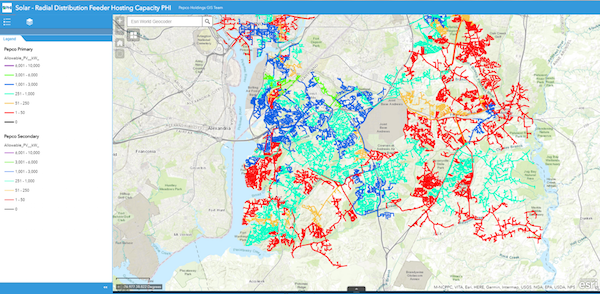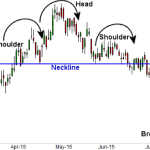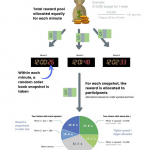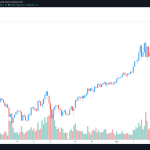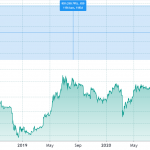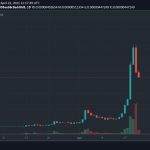The Evolution of Grid Modernization
The call for grid modernization is occurring across the world and utilities are positioned at the forefront of this industry transformation. While some states and countries are moving at a more rapid pace than others, grid modernization is a necessary outcome for utilities to ensure long-term sustainability.
The first wave of grid investments occurred in the late 2000s under the banner of “smart grid” technology, resulting in utility-owned, front-of-the-meter assets like advanced metering infrastructure (AMI) and distribution automation devices. Today, grid modernization has evolved to be more inclusive of customer preferences and desires. In many geographies, this has translated to infrastructure and process improvements that have facilitated the integration of distributed energy resources (DER).
Catalyzed by improved customer economics, the adoption of DERs has been further accelerated by increasing renewable portfolio and clean energy standards and other related public policy objectives. However, supporting the next wave of DER adoption and ultimately optimizing the value these resources can provide to the grid and customers will require a new approach to managing the grid — one which moves beyond incrementally accommodating DERs using existing processes and technologies, to one that can actively manage these resources.
Hosting Capacity and Interconnection — The Foundation of DER Integration
The safe, reliable, and cost-effective interconnection of DERs has been key to meeting customer preferences and energy policy objectives. At low penetrations, the grid has an inherent ability to interconnect or “host” DERs, thanks to robust design and operating criteria that has delivered safe and reliable power to customers for more than a century. Today, many utilities are communicating the ability of their distribution systems to interconnect DERs using customer-facing tools like hosting capacity maps, heat maps and public interconnection queues (Figure 1).
Figure 1: Hosting Capacity Map Courtesy of Pepco Holdings
Additionally, utilities have made great strides in automating and expediting the interconnection process for small scale renewable energy projects typical of residential and small commercial customers. These processes often provide expedited reviews and in some cases auto approval for small scale systems in just a few days.
However, a confluence of factors has made the interconnection process more nuanced and challenging for larger projects as DER penetration has increased on the distribution system. At higher penetration levels, the ability of the grid to host medium and large-scale resources is limited (Figure 2). High penetrations of DERs can introduce a variety of detrimental conditions, including voltage rise and swings, reverse power flow, unintentional islanding, as well as the increased operation of line equipment (leading to decreased asset life). At moderate penetration levels, constraints often limit the allowed size and location of a project while at high penetration levels, projects typically cannot be interconnected without incurring significant costs to pay for equipment upgrades. At a minimum, more detailed engineering evaluations can add time and uncertainty to projects.

Figure 2: Impact of DER penetration on hosting capacity over time
While the technical interconnection evaluation process employed by many utilities has become far more sophisticated, in many cases moving from rudimentary screens to advanced power flow analysis and modelling using a full year’s worth of hourly load and simulated production data, the decision as to whether an interconnection application will be approved is ultimately based on static limits and worst case contingency analyses derived from deterministic planning and operating criteria. Since most DERs are not required to have dedicated metering and telemetry, which would provide visibility into their operational performance, utility planners must employ conservative estimates when conducting these evaluations to ensure grid reliability and safety. As a result, an application can be denied even if a specific detrimental condition may only occur for a few hours per year.
A New Paradigm for Planning?
The utility planning and operating criteria that underpins the interconnection process has historically focused on targeted capital investments driven by projected load and capacity demands. In some states, such as New York and California, the distribution planning process has evolved to be more integrated, often evaluating DERs alongside traditional “wires” projects; however, the planning process still uses static limits, which assume most if not all DERs cannot be actively managed. While many utilities are beginning to explore shifts from deterministic to probabilistic planning, the distribution planning cycle is typically a multi-year process, tied to longer-term capital budgeting. Even if utilities were to make a concerted effort to transition to these more flexible planning methodologies today, there would be a considerable amount of time before the benefits could be realized.
Active Management — A Foundation for DER Optimization
Given the lead time required to make wholesale planning changes, what can be done today to increase hosting capacity and further integrate and optimize DERs? The distribution system has traditionally been managed using a “hub and spoke” model, which has relied on centralized utility technologies and systems like supervisory control and data acquisition (SCADA), energy management systems (EMS) and distribution management systems (DMS). However as DERs have proliferated at the edge of the grid, the requirements for visibility and control of these resources has surpassed the capabilities of traditional centralized systems.
To integrate and optimize the value of high penetrations of DERs and remain within traditional planning and operating criteria, utilities will need to be able to actively manage DERs in real time. By doing so, the conditions under which the typical interconnection violations would occur, such as high export during periods of low load can be avoided through mitigations like strategic curtailment (Figure 3).
When comparing the lost value of curtailed energy against network upgrades costs, there is almost always a clear economic benefit for active management. Further, as many distributed generation tariffs are shifting from pure energy (MWh) focused compensation to one which considers factors such as locational, environmental, and societal benefits, the economic value of a lost MWh is declining.

Figure 3: Strategic Curtailment using Active Network Management
Additionally, whereas point solutions like smart inverters can support a limited number of use cases, active management supports a multitude of use cases across different types of constraints (e.g. thermal and voltage) and technologies (synchronous, inverter-based generation, and load) — providing both flexibility and extensibility as the grid evolves.
However, simply introducing this functionality from an operational perspective is not enough. It is critical to marry both the technical and procedural aspects of the interconnection process so that soft interconnection costs do not remain an impediment after the technical issues have been resolved. This typically requires educating customers about active network management as an alternative to traditional interconnection and also ensuring that the procedural aspects of the process such as application submission and status updates are well integrated with the technical analysis.
Active network management is already a foundational element of the long-term strategies of several distribution network operators (DNO) in the U.K. — allowing customers to access the grid faster and more cost effectively than traditional options. Four of the six DNOs in the U.K. currently employ ANM across key networks zones, and utilities such as Western Power Distribution intend to make ANM a universally available interconnection option as part of their strategic transition to a distribution system operator (“DSO”). Similarly, in North America, active network management will be an integral component of grid optimization. Incorporation of this functionality will be required to shift grid management from precautionary to proactive, allowing utilities, their customers, and the grid to realize the full value of DERs.
Lead image credit: CC0 Creative Commons | Pixabay

